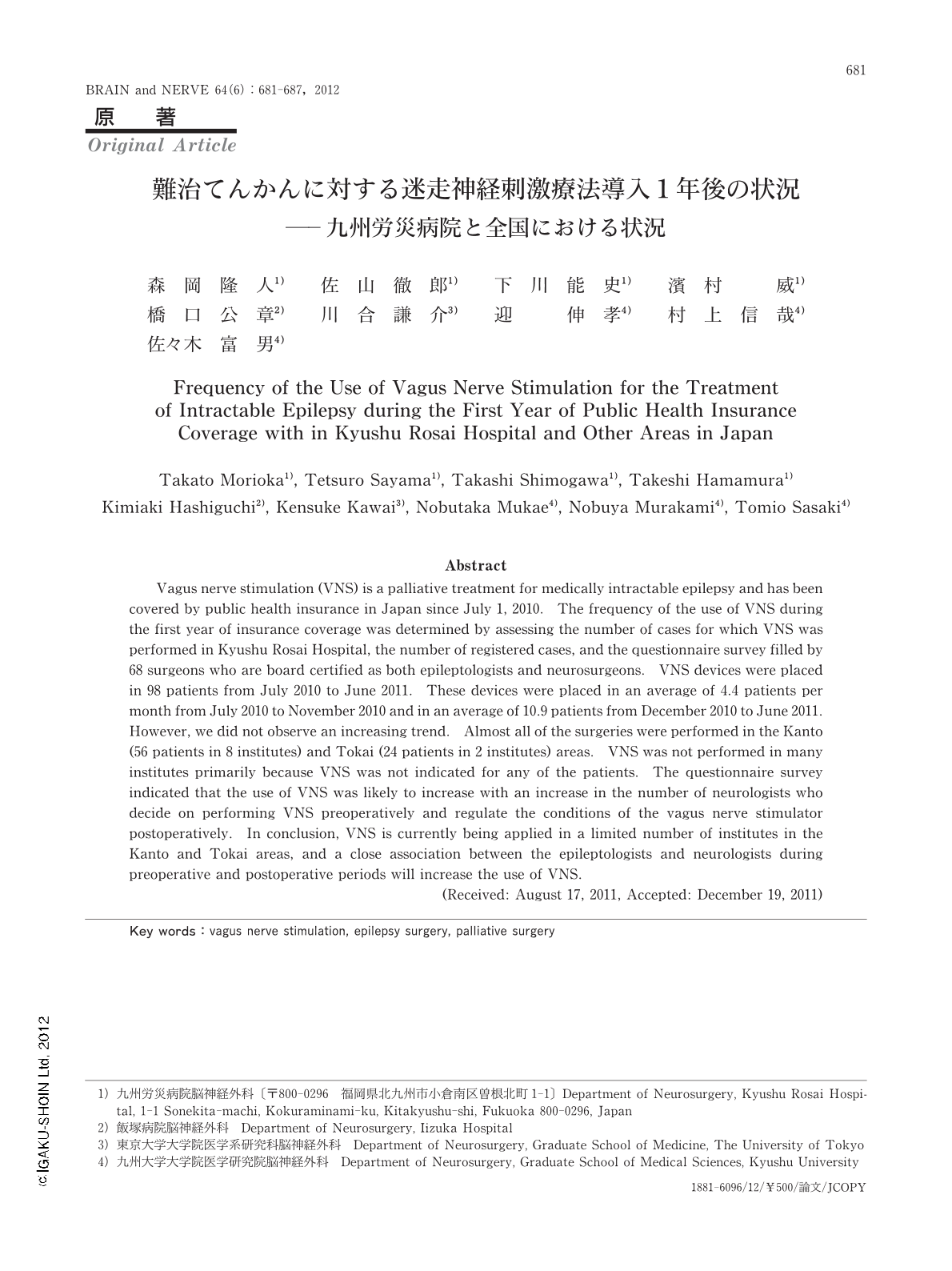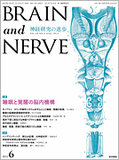Japanese
English
- 有料閲覧
- Abstract 文献概要
- 1ページ目 Look Inside
- 参考文献 Reference
はじめに
迷走神経刺激療法(vagus nerve stimulation:VNS)はてんかんに対する非薬剤性治療の1つである。VNSは,前胸部皮下に埋め込んだ電気刺激装置により,左頸部の迷走神経を間歇的に刺激し,薬剤抵抗性の難治性てんかん発作を減少・軽減する緩和的治療である。効果は根治的ではなく,その作用機序も十分に解明されてはいないが,米国では1997年既に食品医薬品局(Food and Drug Administration:FDA)によって承認されており,この装置の出荷台数は5万台を超えている1,2)。難治性てんかん発作に対する効果は無作為化二重盲検試験で確認された信頼度の高いものであり3,4),1999年の米国神経学会指針5)でクラスIエビデンス認定に至っている。
わが国においては,1990年代に比較試験ではないが,34例の多施設治験が行われ,同様の有効性と安全性が確認され6,7),1998年に薬事承認取得申請されたが,試験時装置のその後変更などの理由で,2005年に申請は却下された。その後2007年に日本てんかん外科学会(第30回日本てんかん外科学会会長 森岡隆人)から「医療ニーズの高い医療機器等の早期導入」項目として再申請された。2008年7月,厚生労働省「第8回医療ニーズの高い医療機器等の早期導入に関する検討会」で審議の結果,有用性と早期導入の必要性が認められ,2010年1月8日に薬事法承認となった1,2)。この薬事法承認は米国に遅れること13年であるが,対象患者の年齢や発作型の制限を設けない一方で,米国のような国内大規模治験なしに承認されたので,施行医師や市販後調査に厳重な制限が設けられている(Table1)。そこで,日本てんかん学会,日本てんかん外科学会,日本脳神経外科学会が合同でVNS資格認定委員会を設け,そこでVNSと刺激装置植込術に関するガイドラインが設定され(Table2),2010年7月1日に保険収載された1,2)。その後に発刊された日本神経学会監修の『てんかん治療ガイドライン2010』では,薬剤抵抗性てんかんの治療において,補助的治療としての有効性が示されている8)。
このVNS療法は,2011年6月末日をもって導入1年目を迎えた。この1年間のVNS普及の状況を調査することは,今後わが国のてんかん治療におけるVNSの役割やその問題点などを考察するうえで重要なことと思われる。そこで本稿では,九州労災病院と全国における状況を報告する。なお,VNSの治療成績については,刺激開始後1年以上の長期観察が必要であるので,今回の報告では触れない。
Abstract
Vagus nerve stimulation (VNS) is a palliative treatment for medically intractable epilepsy and has been covered by public health insurance in Japan since July 1, 2010. The frequency of the use of VNS during the first year of insurance coverage was determined by assessing the number of cases for which VNS was performed in Kyushu Rosai Hospital, the number of registered cases, and the questionnaire survey filled by 68 surgeons who are board certified as both epileptologists and neurosurgeons. VNS devices were placed in 98 patients from July 2010 to June 2011. These devices were placed in an average of 4.4 patients per month from July 2010 to November 2010 and in an average of 10.9 patients from December 2010 to June 2011. However, we did not observe an increasing trend. Almost all of the surgeries were performed in the Kanto (56 patients in 8 institutes) and Tokai (24 patients in 2 institutes) areas. VNS was not performed in many institutes primarily because VNS was not indicated for any of the patients. The questionnaire survey indicated that the use of VNS was likely to increase with an increase in the number of neurologists who decide on performing VNS preoperatively and regulate the conditions of the vagus nerve stimulator postoperatively. In conclusion, VNS is currently being applied in a limited number of institutes in the Kanto and Tokai areas, and a close association between the epileptologists and neurologists during preoperative and postoperative periods will increase the use of VNS.
(Received: August 17,2011,Accepted: December 19,2011)

Copyright © 2012, Igaku-Shoin Ltd. All rights reserved.


